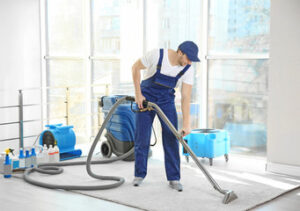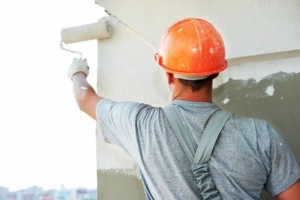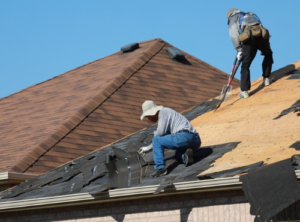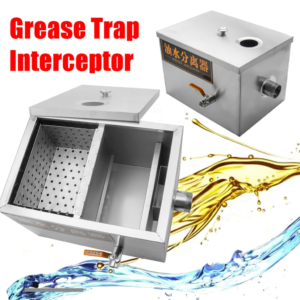Keeping the carpet clean can help preserve its color, keep it soft, and extend its life. Manufacturers also often require regular cleaning to honor warranties.
Vacuuming and spot treating are essential, but for a deep, thorough cleaning that will restore your carpet’s appearance, there are several cleaning methods. Learn the basics of Carpet Cleaning Lehi to get the job done right.

Preparation
When it comes to getting the most out of your carpet cleaning appointment, proper preparation is essential. This is true whether you are hiring a professional or doing it yourself. If you want to get the best results possible, you should take the following steps:
Vacuum the carpeting thoroughly. Use a vacuum with strong suction and set it to the proper height for your type of carpet. This will remove large dirt particles and help prevent re-staining as the carpet dries. You may also wish to consider vacuuming the area again once the cleaning is done to remove any remaining soil and particles.
Remove furniture from the area to be cleaned. This is an important step, especially if you are using a pre-cleaning solution. Be sure to move any breakables and be careful not to scratch or damage any surfaces. If you cannot move the furniture, be sure to cover it with protective foil or plastic. This will prevent scuff marks on the walls and any furniture legs.
Pretest any spot removal agents on an inconspicuous area of the carpet before using them on larger stains. This will help you determine how well the product works and whether or not it is safe to use on your specific carpeting. It is also a good idea to test any stain removal products on the bottom of your furniture to be sure they won’t scratch or mark the wood.
Greasy stains are some of the most difficult to remove from carpeting. If you have a grease-cutting dish soap, sprinkle a small amount of the solution on the stain and blot with a paper towel. This will help break up the oil and allow it to be soaked up by the cleaning solution. If the greasy stain persists, you can try a commercial product that dissolves grease or apply an acetic acid such as diluted white vinegar.
Be sure to protect any areas that aren’t going to be cleaned, such as baseboards, with painter’s tape. This will prevent the cleaning solution or hoses from leaving ugly black scuff marks. It is also a good idea to cover any electrical outlets that may be in the area with aluminum foil or plastic sheeting.
Cleaning
The carpet is cozy, but it’s also sort of like Velcro, grabbing onto hairs, dander, dust bunnies, and other cities. Frequent vacuuming, spot cleaning, and deep cleaning help prevent this buildup, keeping your rugs looking and smelling fresh.
Vacuuming is the best way to remove surface-level dirt, dander, and other particles. A strong, efficient vacuum cleaner can get the job done quickly and efficiently. Whether you use a traditional vacuum cleaner or one of the newer, bagless vacuums, make sure to move your furniture before you start. Using the right settings on your machine is crucial, too. You’ll want to use a hard-floor setting for high-traffic areas and a gentler setting for delicate area rugs.
If you have pets or children, a stain-removal tool in your arsenal is essential. You’ll want to have a nontoxic cleaner on hand for one-off spills and stains, as well as a deodorizer to keep your carpets smelling good. Before you apply any cleaner, test it in an unobtrusive spot to make sure it doesn’t discolor your rug’s fibers. Also, always blot rather than rub; too much pressure can push stains deeper into the fibers.
Another great nontoxic cleaner is baking soda. Sprinkle the carpet with the powder, let it sit for 15 minutes, then vacuum to remove it and odors. You can also make a homemade carpet shampoo from water and soap flakes. Mix equal parts of each, and then add warm water to create a bubbling solution that can pull out stains and odors from your carpets. This is also a great time to add some essential oils for a more pleasant scent scene in your home.
A few times a year, you should do what’s called deep cleaning or hot water extraction. This process uses hot water and a special detergent to remove more deeply embedded dirt, dander, and other contaminants. This is a more intensive cleaning method than simply running your vacuum, but it’s also the only way to give your rugs that truly clean and brand-new look. A professional service can do the job more thoroughly and in less time than you can, so it’s worth investing in a service once or twice a year.
Extraction
Whether it’s picking up mud and grass stains after the kids come in from outside, or traipsing through grit, salt, and sand tracked into the house on shoes, the wear and tear of everyday living causes dirty carpets. Carpet extractors can take cleaning to a whole new level, removing soil that simple vacuuming can’t.
A carpet extractor uses a mild solution of water and cleaning chemicals to penetrate deep into the carpet pile and agitate the dirt and grime. This loosened dirt then mixes with the cleaning solution and is extracted into the extractor’s tank for later disposal.
The key to effective extraction is to allow enough time for the chemical to work. This is especially important with greasy or sticky soils that need to be thoroughly rinsed. If all of the soapy residues are not rinsed away, the carpet will remain sticky or stiff and will recoil quickly after cleaning.
Most professional carpet cleaners use truck-mounted hot water extraction, which is a powerful machine that can remove more of the soapy residue than an ordinary portable machine. If you are doing your cleaning, be sure to rent a self-contained, portable, or small extractor (we have many styles in stock). If you’re dealing with stubborn stains and want the best results possible, consider purchasing a power scrub brush for pretreating floor mats or heavily soiled areas of carpet. This brush agitates stains, breaking up the stain and making it easier for the cleaning solution to penetrate the stain’s depth.
If you’re dealing with an odor problem, a deodorizing spray can help. A good spray will kill odor-causing bacteria and also work as a solvent to break up odor-causing molecules. Be sure to follow the manufacturer’s instructions for the application and use of any odor-control products. To keep odors from coming back, apply a soil retardant to the newly cleaned carpet. This will slow the rate at which the carpet recoils and make future cleanings much easier. Be sure to use a quality product that is compatible with the type of carpet you have.
Drying
Carpets require regular cleaning to remove dust and soil particles that tend to cling to fibers. When they become heavily soiled, it may be necessary to perform an in-depth cleaning with hot water extraction or other methods. This can help restore and maintain the beauty of your home’s carpeting, as well as reduce allergens and improve indoor air quality.
However, proper drying is important after cleaning to ensure that no remaining moisture can damage the carpet or promote the growth of mildew or mold. This requires that you have the right tools and methods at your disposal to speed up the drying process.
Before starting the drying process, vacuum the carpet thoroughly to get rid of as much dirt and debris as possible. Use the hose and attachments on your vacuum to extract as much water as you can from deep within the fibers. Then, place several layers of white paper towels over the wet area and weigh them down with something heavy (like a phone book). This will absorb the most amount of moisture from the carpet before it can evaporate. Continue this process as the carpet continues to dry.
Alternatively, you can use fans to create airflow over the wet area and speed up the drying process. In addition, you can open windows and doors to increase ventilation throughout the house and allow fresh, warm air to replace the damp, cool air that is usually present in a room after a thorough carpet cleaning.
Using these techniques, you can significantly reduce the time it takes for your carpet to completely dry after cleaning. However, in the event of major water damage, it is generally best to contact a professional carpet restoration company that is CRI-certified. This will ensure that you are working with a company that uses only the best equipment and cleaning solutions, which can help protect your carpet warranty. They will also have the skills and experience needed to handle even the most severe of water damage incidents. This will save you both time and money, as well as minimize the risk of mold and mildew buildup.








